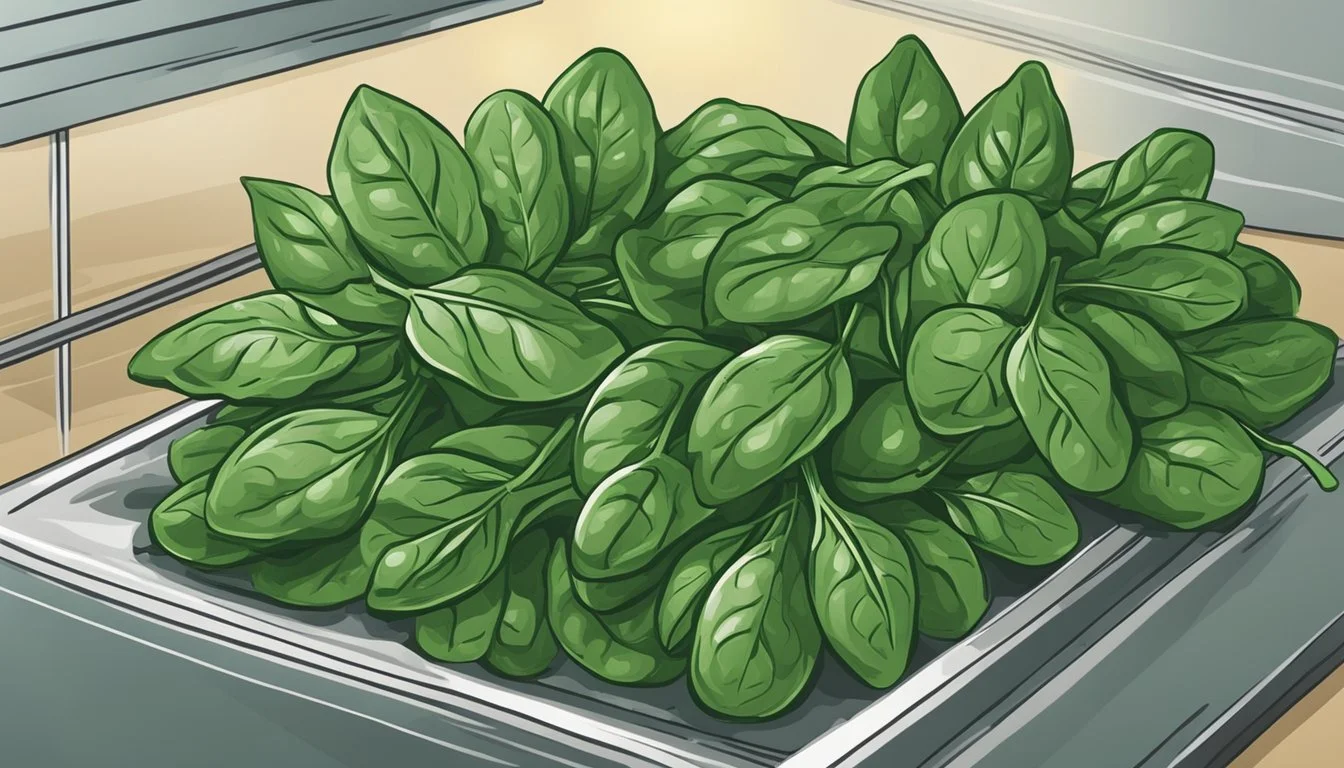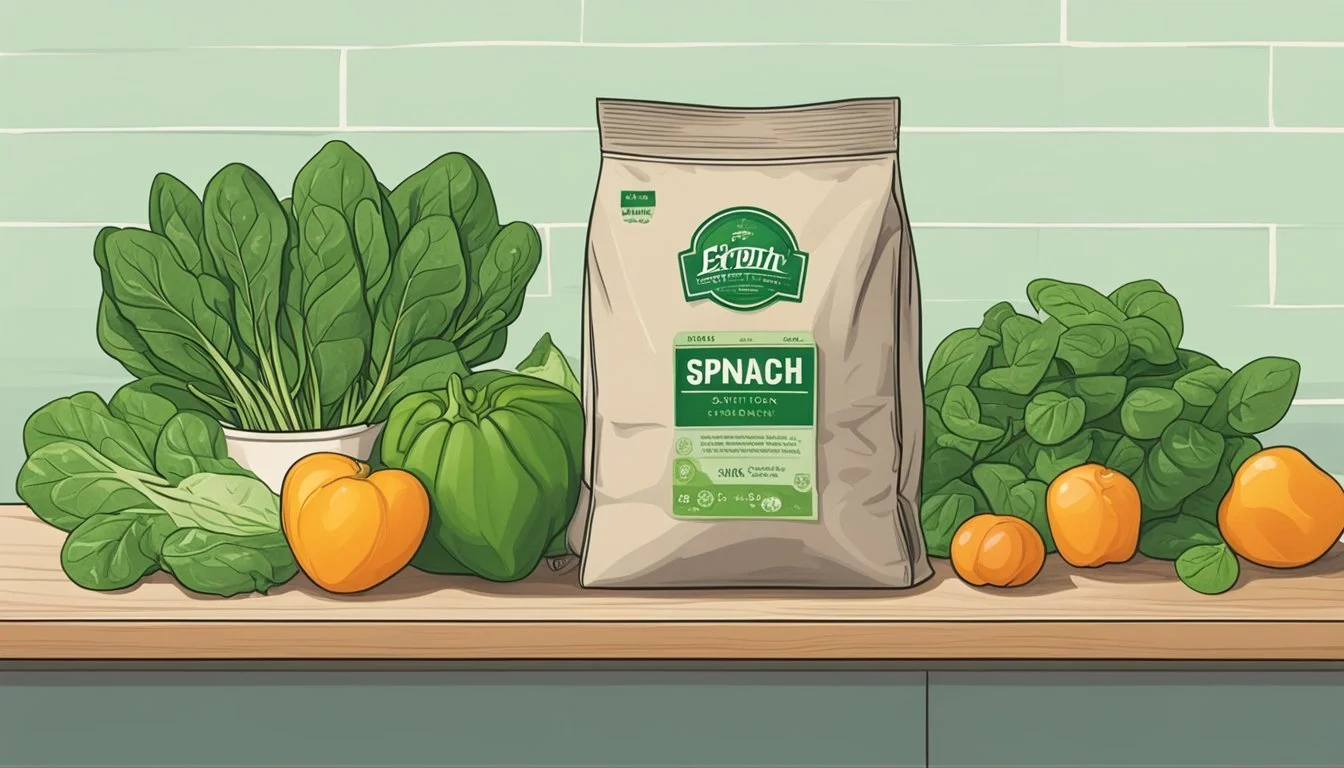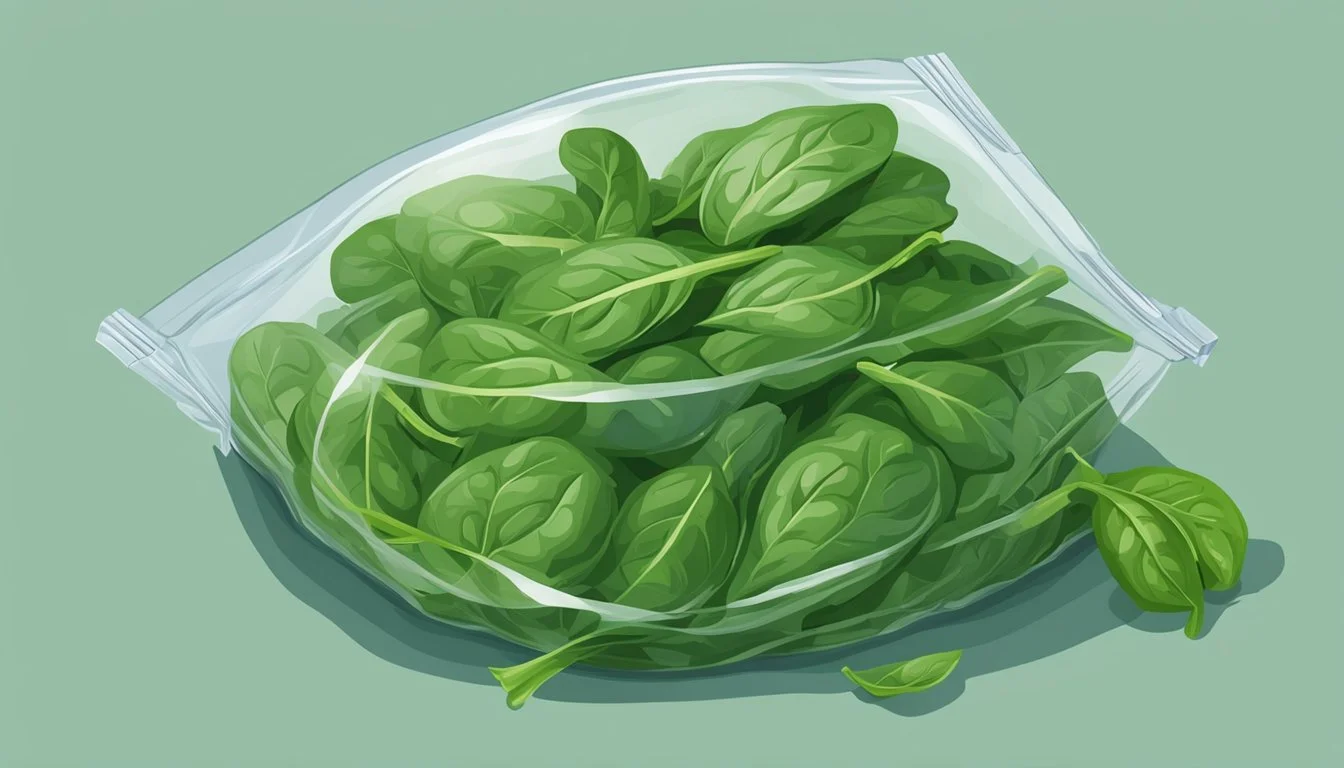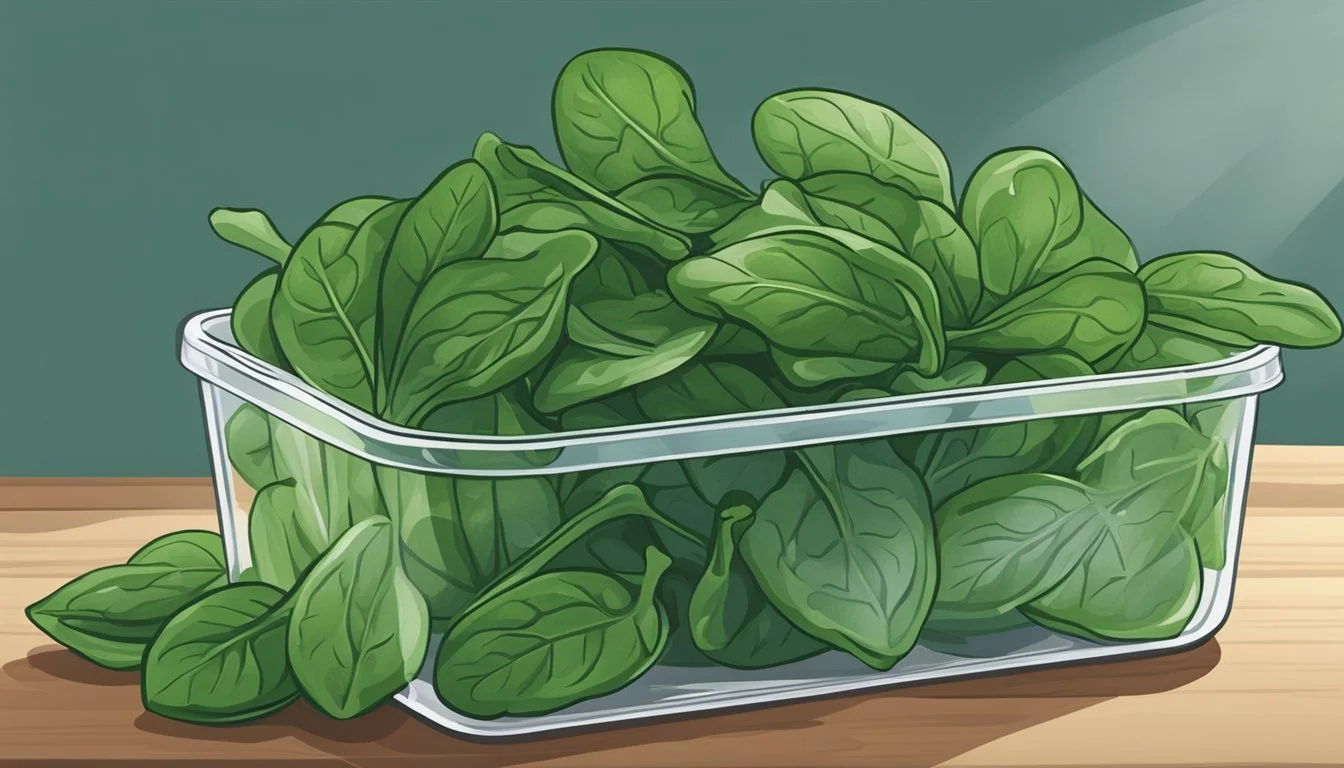How Long Does Spinach Last?
Understanding Shelf Life and Storage Tips
Spinach (What wine goes well with spinach?), known for its nutritional benefits and versatility in the kitchen, typically has a short shelf life, which can be affected by various storage methods. Raw, uncooked spinach can last about 5 to 7 days in the refrigerator when stored properly. Factors such as moisture and packaging play a crucial role in determining its longevity. The use of a paper towel to wrap the spinach helps absorb excess moisture, which is a common accelerant of decay.
Properly stored in a sealed container or bag, spinach retains its freshness for an optimal period. The crisper drawer of a refrigerator provides an ideal environment for preserving the leafy green's quality. Additionally, cooked spinach has a shorter fridge life ranging from 2 to 4 days. It's important to note that these time frames are general guidelines, and the actual longevity of spinach may vary based on specific conditions in one's fridge and how fresh the spinach was at the time of purchase.
Identification and Selection
Selecting fresh spinach and identifying signs of spoilage are crucial for ensuring quality and safety in consumption. Proper selection at the point of purchase can maximize shelf life and nutritional value.
Choosing Fresh Spinach
When one selects fresh spinach, they should look for vibrant, deep green leaves that are crisp and taut. The stems should be firm, indicating the spinach is fresh. Fresh spinach typically displays the following attributes:
Bright green leaves
Crisp texture
No signs of wilting
Fresh, earthy smell
One should avoid bunches where the leaves are yellowing or have a darkened color, as these are indicators that the spinach is past its prime.
Signs of Spoilage
Recognizing spoilage in spinach can prevent foodborne illness and ensure the spinach one consumes is of good quality. Tell-tale signs of bad spinach include:
Slimy texture: A slippery or mushy feel is a clear indication that spinach is no longer fresh.
Mold: Presence of fuzzy white or black spots means the spinach should be discarded.
Odor: An off or sour smell is a sign that spinach has spoiled.
Damaged leaves: Leaves that are crushed or bruised are more susceptible to spoilage.
Once these signs are evident, it is recommended that the spinach be thrown away to avoid the risk of foodborne illness.
Storage Fundamentals
Proper storage of spinach is crucial for maintaining its freshness and food safety. The longevity of spinach relies heavily on controlling factors like temperature and moisture.
Storing Spinach at Home
When storing spinach at home, one should aim to minimize moisture while ensuring the leaves are kept cool. Fresh spinach should first be gently wrapped in paper towels; this helps absorb any excess water which can accelerate decay. The paper towels act as a barrier to moisture while also allowing some air circulation. After wrapping, spinach should be placed in an airtight container or plastic bag to prevent additional moisture and ethylene gas, which is released by some fruits and vegetables, from affecting its quality.
Refrigerator vs. Counter
Spinach is best stored in the refrigerator, specifically in the crisper drawer, as this will help maintain an ideal temperature and protect it from temperature fluctuations. A consistent temperature just above 0°C (32°F) is optimal for spinach, as any cooler may cause freezing and any warmer could hasten spoilage.
Refrigerator (Crisper Drawer): Typically retains spinach freshness for about 10 days.
Pros: Slows down the decaying process and reduces exposure to ethylene gas.
Cons: Space-consuming; risk of forgotten produce leading to waste.
Counter:
Not recommended for storing fresh spinach, as room temperature will accelerate the wilting process.
Exception: Spinach should only be kept at room temperature if it will be consumed within the same day.
To distinguish between bagged spinach and loose leaves, bagged spinach often comes pre-washed and should be kept in its original packaging until ready to use. If the package is resealable, expelling as much air as possible before resealing may extend its shelf life. If not, transferring the spinach to an airtight container with paper towels is advisable.
Proper Handling Techniques
Proper handling techniques are essential for extending the shelf life of spinach. One must ensure spinach is thoroughly washed and dried before storage.
Washing and Prepping Spinach
To begin with, spinach should be washed in cold water to remove any dirt or debris. It's important to separate the leaves, allowing water to reach all surfaces for a thorough clean, especially if the spinach is not pre-washed. After washing, spinach should be gently dried. This can be done by laying the leaves on a paper towel to absorb excess moisture.
Using Salad Spinners
A salad spinner provides an efficient way to dry spinach. After rinsing, the spinach leaves should be placed in the basket and the water spun off. A salad spinner works by using centrifugal force to remove water, and it can effectively dry the leaves without damaging them. Once the spinach is thoroughly dried, it retains its texture and is ready for storage or immediate use.
Maximizing Shelf Life
Proper storage methods are key to extending the shelf life of spinach, whether one opts to refrigerate fresh spinach or freeze it for longer-term use.
Refrigerating Fresh Spinach
Fresh spinach's shelf life in the refrigerator is typically around 3 to 5 days. To ensure maximum freshness when refrigerating, one should:
Dry the spinach thoroughly to prevent excess moisture, which can accelerate spoilage.
Wrap the spinach in a paper towel to absorb any remaining moisture.
Store the wrapped spinach in an airtight container or resealable plastic bag.
Place the container or bag in the crisper drawer of the refrigerator, where the temperature is most consistent.
Freezing Spinach
For longer storage, freezing spinach can preserve its quality for up to 6 months. The process for freezing spinach effectively is as follows:
Wash the spinach thoroughly to remove any dirt.
Blanch the spinach in boiling water for a few seconds to inactivate enzymes that lead to spoilage.
Transfer the spinach to an ice bath immediately to halt the cooking process.
Drain the spinach and pat dry.
Pack the dry spinach into freezer-safe bags or containers, expelling as much air as possible.
Label the containers with the date before placing them in the freezer.
Blanching before freezing helps maintain better color, flavor, and nutritional value. Frozen spinach is best used within 6 months, as it may be prone to freezer burn after this period.
Recognizing Freshness and Quality
When purchasing spinach, one should assess both its physical appearance for indication of freshness and its potential nutrient content to ensure that it provides the desired health benefits.
Texture and Color Indicators
Spinach should be vibrant and green, displaying a natural sheen without any yellowing or dullness. The leaves should feel crisp to the touch, not wilted or soft. When the texture becomes limp or slimy, spinach is past its prime and should not be consumed.
Fresh Spinach Texture & Color:
Crisp leaves
Bright green color
No sliminess
Nutrient Retention
The nutritional value of spinach largely depends on its freshness. Fresh spinach contains a rich supply of vitamins and minerals contributing to its health benefits. As spinach ages, nutrient loss can occur, so purchasing fresh, firm leaves is crucial for maximizing these benefits.
Fresh Spinach Nutritional Qualities:
High levels of vitamins (A, C, K)
Rich in iron and magnesium
Best consumed within 5-7 days for optimal nutrient retention
Usage and Recipes
Spinach is a versatile leafy green that can be enjoyed both raw and cooked, offering a range of uses from fresh salads to warm, comforting dishes. Proper storage methods can greatly extend its shelf life, making it a reliable ingredient for various culinary creations.
Incorporating Spinach into Dishes
Incorporating spinach into daily meals is straightforward due to its adaptability. Spinach can be added to smoothies for a nutrient boost, sautéed as a side dish, or incorporated into pasta, omelets, and stir-fries. To maintain the nutritional integrity and vibrant color of spinach when cooking, one should add it towards the end of the cooking process.
For fresh spinach, consider the following preparation techniques:
Sautéing: A quick sauté with garlic and olive oil transforms spinach into a flavorful side dish.
Blanching: Blanching and then shocking spinach in ice water retains its color and allows it to be used in a variety of dishes while preserving most of its nutrients.
Steaming: Steaming spinach is another healthful option that avoids the use of excess oil.
Spinach in Salads
Raw spinach serves as an excellent base for salads due to its mildly sweet flavor and tender texture. Here are some tips to incorporate spinach into salads effectively:
Texture: Fresh spinach leaves add a crisp texture to salads, which can be balanced with nuts, seeds, or croutons.
Dressings: Dressings should be chosen to complement the delicate taste of spinach; vinaigrettes are a popular choice as they don't overpower the leaf's flavor.
Combinations: Spinach pairs well with a variety of fruits, such as strawberries or apples, and cheeses like feta, goat cheese, or shaved Parmesan for added flavor profiles.
One must be mindful not to overdress the salad, as spinach can wilt easily. To prepare spinach for salad use:
Wash the spinach leaves thoroughly to remove any dirt.
Dry the spinach leaves carefully to avoid excess moisture, which can lead to rapid spoilage.
Toss the spinach with other ingredients right before serving to ensure freshness.
When using spinach in recipes, both raw and cooked forms can greatly enhance the nutritional value and taste of the dish. Choosing quality fresh spinach and storing it correctly affects both the flavor and the safety of the finished dish.
Safety Considerations
When consuming spinach, safety is paramount. It is important to be vigilant about contamination and the health risks associated with spoiled spinach to ensure food safety and prevent foodborne illnesses.
Contamination and Food Safety
Spinach, like other leafy greens, can become contaminated with bacteria such as Salmonella and E. coli. These bacteria can lead to food poisoning, especially if the spinach is not handled or stored correctly. To mitigate the risk of contamination:
Wash spinach thoroughly before use to remove any potential bacteria.
Dry spinach properly because moisture can encourage bacterial growth.
Observe storage tips: Refrigerate spinach at a constant temperature and use within the use-by date.
Health Risks from Spoiled Spinach
The consumption of spoiled spinach can result in health risks, as harmful bacteria may have multiplied to levels that can cause illness. Symptoms of foodborne illness from consuming spoiled spinach may include nausea, vomiting, and diarrhea. It's crucial to note:
Always inspect spinach for signs of spoilage, such as a slimy texture or off smell, before use.
Discard any spinach past its expiration date or if it appears spoiled, even before the stated date.
Incorporating these practices when handling spinach and other vegetables is essential in maintaining food safety and preventing health risks.









